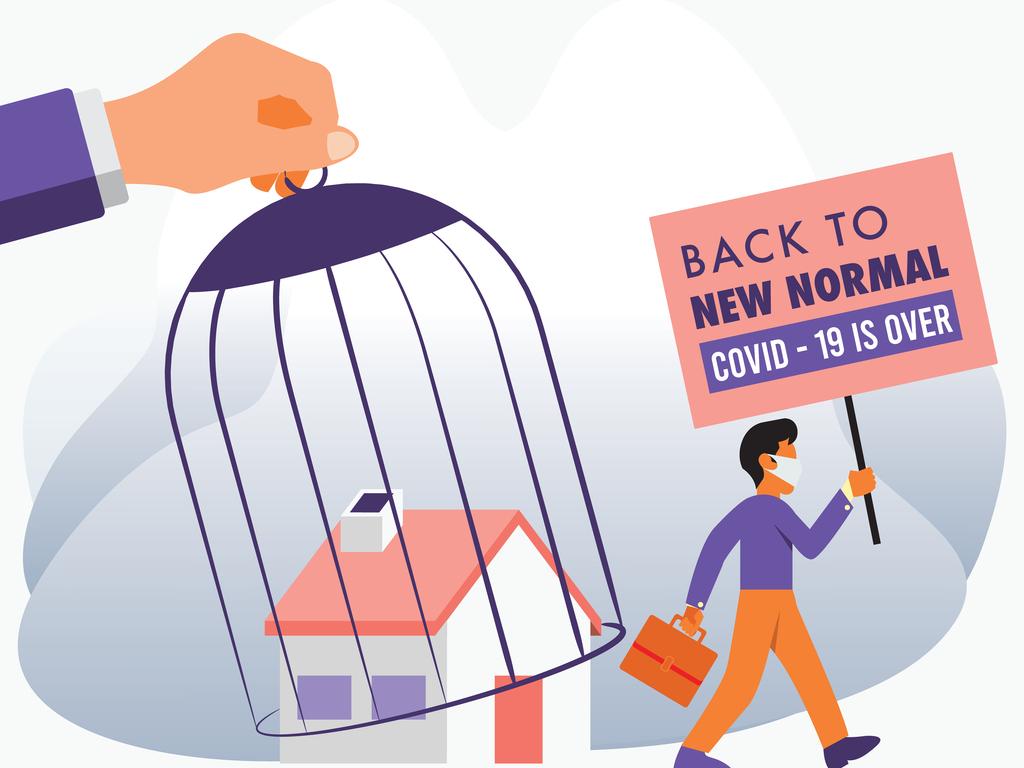
Compiled By: Sandeep Raghunath
About Sandeep: He is the Head of Human Resources at Fibe, with 10+ years of international experience in HR across industries.
Remember the rush in the crowded metros at the office hours? Remember the group meetings of the corporate projects? Remember those long office hours at the workplace?
Now, that phase of our life has become something of the past. This pandemic has impacted our lives and our way of living. Earlier, being social was considered to be a critical aspect of our lives, almost a skill. But with the recent turn of events, being at home is the best decision one could make.
But sooner or later, all of us will move past this COVID-19 pandemic. This may not happen tomorrow or one week from now. Hence, we should accept the fact that returning to a normal routine would take a lot of time. Encouragingly, countries like China and South Korea are gradually beginning to come back to their ordinary lives.
A key question that would arise is what “normal” would be like after the COVID-19 pandemic. As per the current scenario, the Indian workforce is compelled to operate from home.
Setting up a workplace would be a challenging task after the pandemic. To prop tasks up while limiting the hazards, most organizations have adopted new and better approaches for employees that have left their workplaces, production lines, stores, and different offices generally unfilled.
According to Apex Leadership, some changes that could be observed in workplaces are:
If the workplace re-opens after the situation becomes normal, the very first few changes would include the comfort of being alone rather than being with a group.

General protocols would be impacted and questions like, ‘Is there any important reason to perform this operation online?’ would be changed to ‘Is there any valid justification to do this face to face?’
A fairly essential suggestion – organizations will try to operate virtually but workplaces, where physical attendance is compulsory, will certainly consider the concept of thermal screening of employees at the office gates. Checking employees and guests for fever before entering the workplace would be mandatory, and having rules like leaving some seats empty and making workstations far apart from each other would be some steps that would be taken up by organizations after the situation becomes normal.
The coronavirus did what years of digital transformation could not – we figured out how to work remotely over the internet after the onset of the pandemic. And this change may be here to stay. The work from the home model would be the primary choice for both employees and organizations and this may compel industry-wide mass adoption, even for those that were not in favor of having a virtual workforce. It is, after all, a leaner, more flexible model.
Additionally, WFH proves to be a cost-cutting method for companies as office rent, and multiple other overheads are reduced significantly from the company’s expenditure.
Being the first to arrive at the workplace and the last one to leave was already a flawed way to look at productivity, and it’ll certainly not be considered an indicator of the productivity of an individual going forward. In a post-COVID-19 world, employees will be evaluated on the work they complete in a given time frame, rather than just sitting for long office hours.
The most impacted aspects of the workplace would include interactions with customers and stakeholders. The current scenario might change how organizations meet with customers and stakeholders, alongside everyday tasks. Perhaps the trickiest part of the new working environment will be the way organizations connect with their customers and stakeholders. Customary interpersonal meetings have already been replaced with video calls.
Most organizations will try to train their teams for the new normal. Modules on remote working, management, should see a steady video conference course to use for customers, stakeholders, and others. But finding the correct harmony between the face to face and virtual gatherings is vital.
Are organizations equipped to handle a new working environment? No one has witnessed changes of this magnitude in their lives. While most organizations have business continuity plans set up for calamitous occasions like fire, seismic tremors, and floods, etc, only a few organizations were prepared for the degree of disturbance brought about by COVID-19. It’s why hiring freezes and even downsizing are in effect.
How our work environments will change once this pandemic is over and the world returns to normalcy is yet to be seen. But it’s a reasonable guess that the new normal will be more inclined towards a work from home environment.
Download the instant loan app here, and be a part of the #OneInAMillion experience.